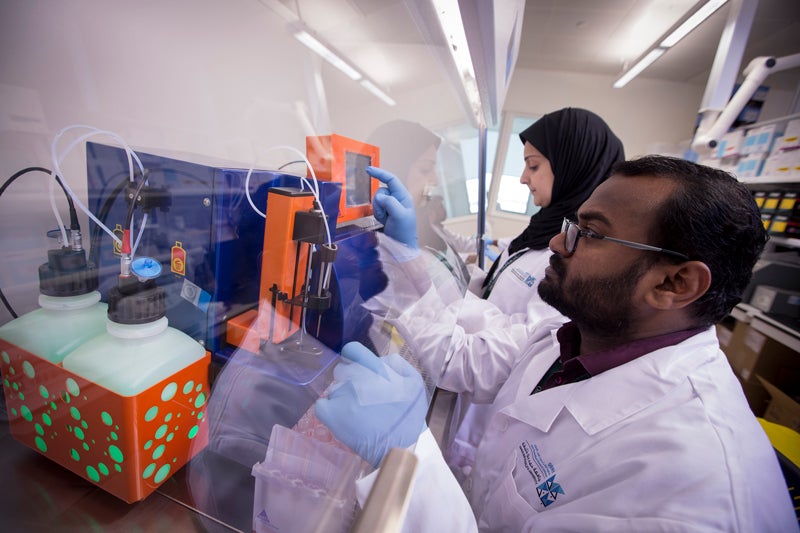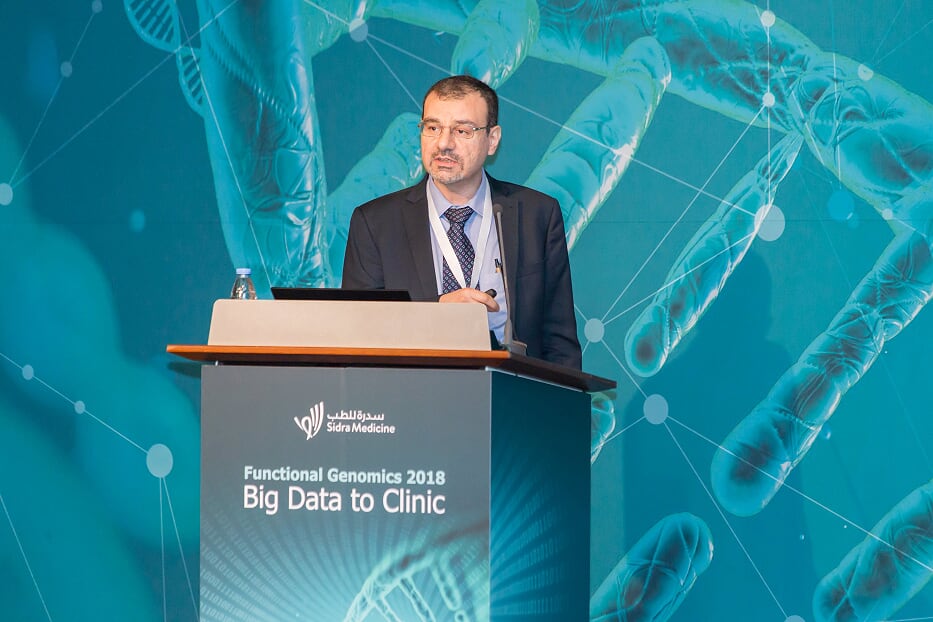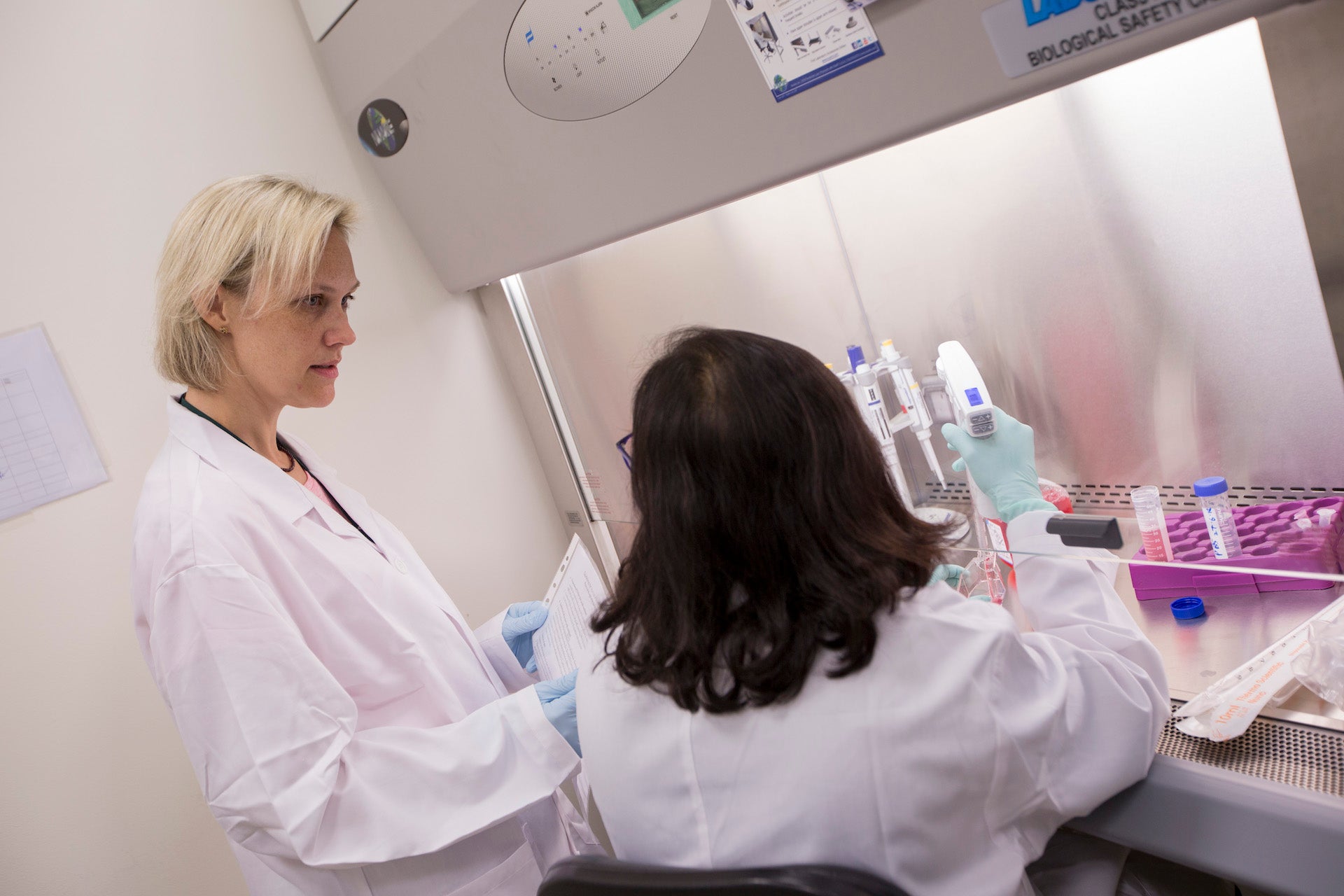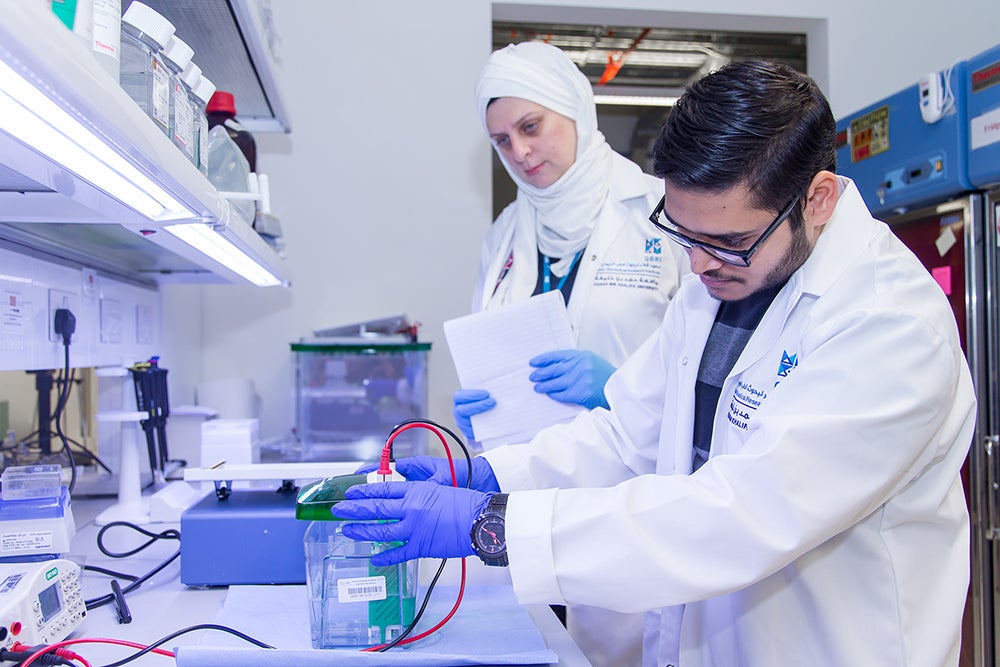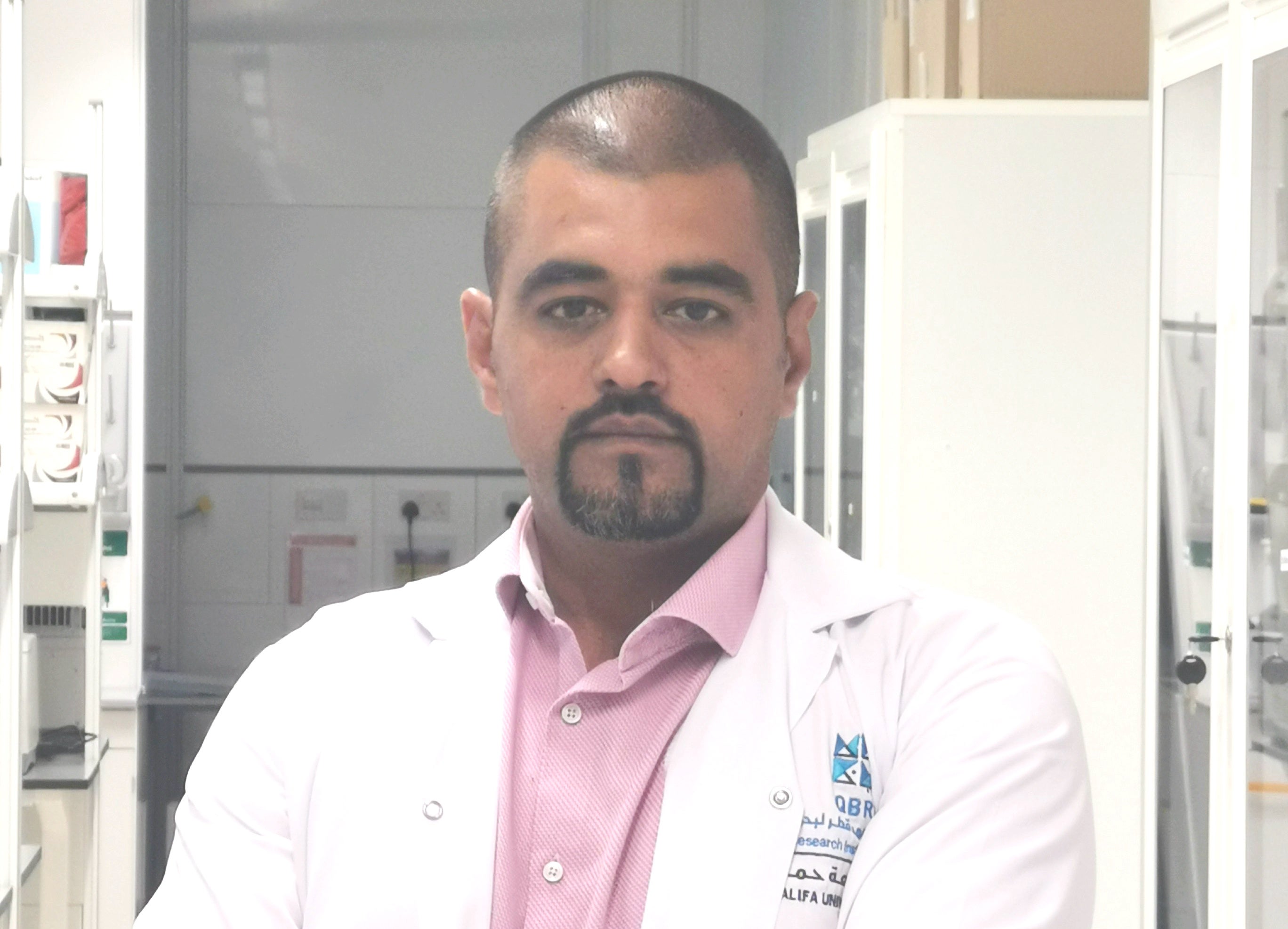
Pioneering Autism Risk Index Tool Utilized by QBRI
New research builds on a Cleveland Clinic children’s study showing eye-tracking technology as a reliable method for early diagnosis and treatment of autism spectrum disorder
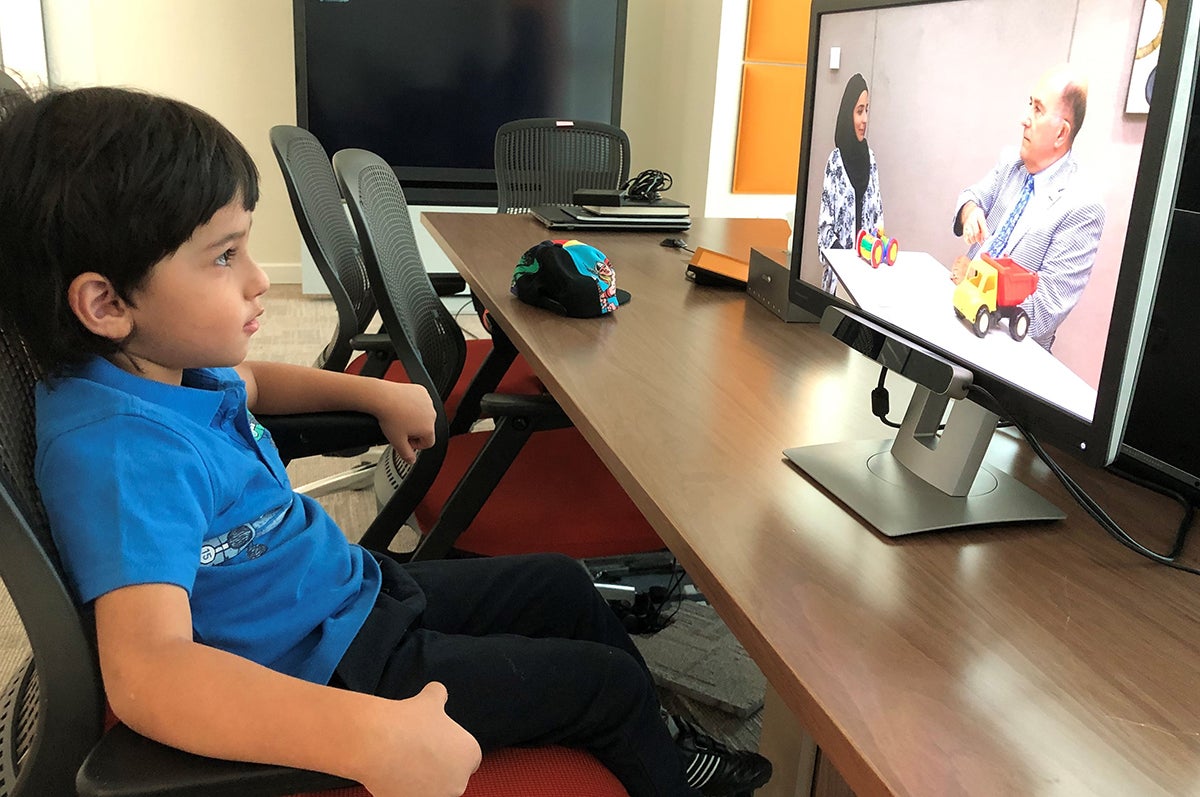
A multidisciplinary team of researchers at the Qatar Biomedical Research Institute (QBRI), part of Hamad Bin Khalifa University (HBKU), has demonstrated that an innovative eye gaze-based screening tool is successful in diagnosing autism spectrum disorder (ASD) in young children, according to new findings that were published in Autism Research.
Eye-gaze tracking is considered one of the most important biomarkers for ASD. Impaired gaze and social attention patterns are among the early signs of ASD. In 2016, Dr. Thomas Frazier (then director of Cleveland Clinic Children’s Center for Autism) used this disparity to develop the first objective diagnostic tool called the “autism risk index.”
Using an LCD monitor with a remote eye tracker, children are shown visual stimuli to evaluate their gaze. An algorithm generates a diagnosis based on the risk index in less than 10 minutes and with a success rate of over 85 percent. The tool can be used safely on infants as young as six months old, signaling a major advancement in the early diagnosis of ASD.
In 2017, QBRI and Cleveland Clinic Children’s Center for Autism formed a research collaboration to further study the technology in Qatar. As part of this collaboration, QBRI carefully created and validated Arabic-language, culturally-appropriate visual stimuli to test the tool on youth in Qatar. The joint research paper highlighted the findings of eye-tracking assessments on over 500 youths, aged 1-17, in Qatar and the United States. The study included a cohort of 150 individuals with ASD from Qatar, in addition to 130 participants used as controls. Of major significance is the consistency of the results between the young subjects tested in Qatar and the United States.
According to the research findings, this is the largest study of its kind to characterize the structure of social attention - and the only one to examine cross-cultural consistency.
Corresponding authors of this paper include Dr. Fouad Alshaban, Senior Scientist at QBRI’s Neurological Disorders Research Center, and Dr. Frazier, Professor at John Carroll University in University Heights, Ohio. In addition, co-authors included Dr. Mohammed Aldosari, Director of the Center for Pediatric Neurosciences at Cleveland Clinic Children’s in Ohio, USA; Al Shafallah Center, Qatar; the University of Melbourne’s School of Psychological Sciences in Victoria, Australia; and the University of North Carolina in Chapel Hill, N.C.
Dr. Alshaban explained: “We are very pleased to report these optimistic study findings and we foresee a positive impact. Diagnosing ASD as early as possible means treating or intervening earlier to give families and individuals with ASD better long-term outcomes.
“We hope to continue this collaboration with Cleveland Clinic, which will enable QBRI to introduce this technology for the first time in Qatar and the Arab region, and work with stakeholders to extend its benefits to communities. Advancing early ASD diagnosis or evaluation is consistent with QBRI’s efforts to improve the effectiveness of healthcare and the quality of life, particularly for populations in Qatar and the region, while contributing to research of global relevance.”
Speaking about the collaboration, Dr. Omar El-Agnaf, Executive Director at QBRI, said: “As a global hub for biomedical and translational research, QBRI constantly seeks to strengthen its collaborations and strategic partnerships with international partners. Our collaboration with Cleveland Clinic Foundation, which aims towards diagnosing ASD at an early stage, reflects QBRI’s mission to transform novel scientific discoveries into efficient solutions that address Qatar’s health priorities.“
Commenting on the study’s findings, Dr. Frazier said: “Removing the subjectivity in diagnosing ASD with a tool like the autism risk index means we can more quickly and easily evaluate current treatments and also develop new ones. Collaborating with a partner that is as committed to these research outcomes as QBRI helps ensure that the benefits of the tool can have a unique regional and global presence.”
Related News

Recent research on the health impact of highly processed foods and drinks and the risk of obesity and diabetes

HBKU’s Qatar Biomedical Research Institute and Qatar Computing Research Institute Jointly Publish Risk Tool to Fight Diabetes

HBKU’s Qatar Biomedical Research Institute Participates in Virtual Diabetes Symposium
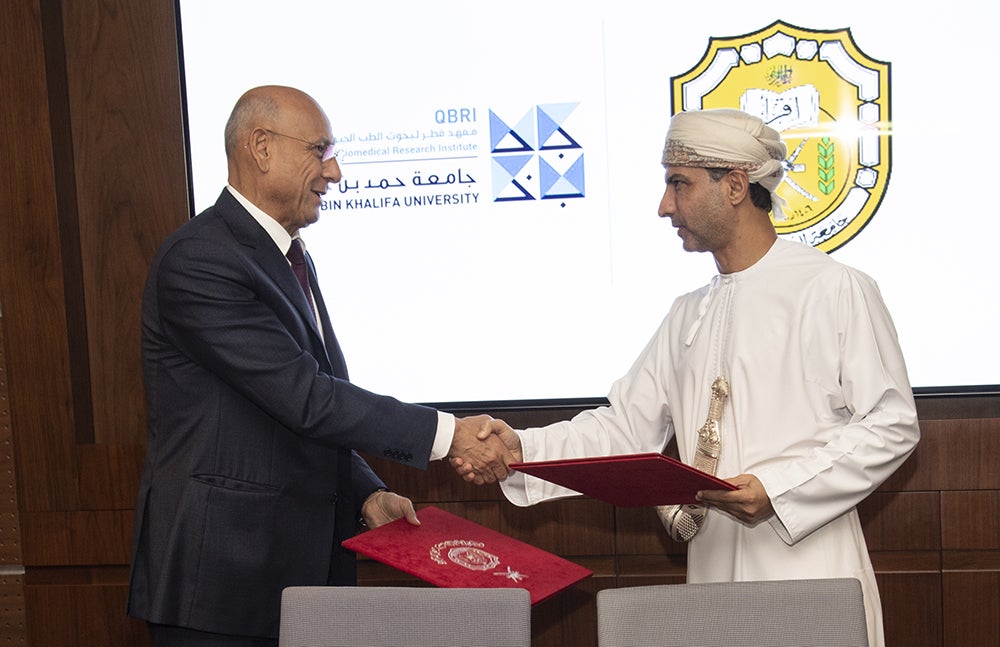
Qatar Biomedical Research Institute to Cooperate with Sultan Qaboos University on Autism Research

HBKU’s Qatar Biomedical Research Institute Releases Findings of Pioneering Autism Study

Recent research on the health impact of highly processed foods and drinks and the risk of obesity and diabetes

HBKU’s Qatar Biomedical Research Institute and Qatar Computing Research Institute Jointly Publish Risk Tool to Fight Diabetes

HBKU’s Qatar Biomedical Research Institute Participates in Virtual Diabetes Symposium

Qatar Biomedical Research Institute to Cooperate with Sultan Qaboos University on Autism Research

HBKU’s Qatar Biomedical Research Institute Releases Findings of Pioneering Autism Study

Recent research on the health impact of highly processed foods and drinks and the risk of obesity and diabetes

HBKU’s Qatar Biomedical Research Institute and Qatar Computing Research Institute Jointly Publish Risk Tool to Fight Diabetes

HBKU’s Qatar Biomedical Research Institute Participates in Virtual Diabetes Symposium

Qatar Biomedical Research Institute to Cooperate with Sultan Qaboos University on Autism Research

HBKU’s Qatar Biomedical Research Institute Releases Findings of Pioneering Autism Study

Recent research on the health impact of highly processed foods and drinks and the risk of obesity and diabetes

HBKU’s Qatar Biomedical Research Institute and Qatar Computing Research Institute Jointly Publish Risk Tool to Fight Diabetes

HBKU’s Qatar Biomedical Research Institute Participates in Virtual Diabetes Symposium

Qatar Biomedical Research Institute to Cooperate with Sultan Qaboos University on Autism Research

HBKU’s Qatar Biomedical Research Institute Releases Findings of Pioneering Autism Study

Recent research on the health impact of highly processed foods and drinks and the risk of obesity and diabetes

HBKU’s Qatar Biomedical Research Institute and Qatar Computing Research Institute Jointly Publish Risk Tool to Fight Diabetes

HBKU’s Qatar Biomedical Research Institute Participates in Virtual Diabetes Symposium

Qatar Biomedical Research Institute to Cooperate with Sultan Qaboos University on Autism Research

HBKU’s Qatar Biomedical Research Institute Releases Findings of Pioneering Autism Study

Recent research on the health impact of highly processed foods and drinks and the risk of obesity and diabetes

HBKU’s Qatar Biomedical Research Institute and Qatar Computing Research Institute Jointly Publish Risk Tool to Fight Diabetes

HBKU’s Qatar Biomedical Research Institute Participates in Virtual Diabetes Symposium

Qatar Biomedical Research Institute to Cooperate with Sultan Qaboos University on Autism Research

HBKU’s Qatar Biomedical Research Institute Releases Findings of Pioneering Autism Study

Recent research on the health impact of highly processed foods and drinks and the risk of obesity and diabetes

HBKU’s Qatar Biomedical Research Institute and Qatar Computing Research Institute Jointly Publish Risk Tool to Fight Diabetes

HBKU’s Qatar Biomedical Research Institute Participates in Virtual Diabetes Symposium

Qatar Biomedical Research Institute to Cooperate with Sultan Qaboos University on Autism Research

HBKU’s Qatar Biomedical Research Institute Releases Findings of Pioneering Autism Study

Recent research on the health impact of highly processed foods and drinks and the risk of obesity and diabetes

HBKU’s Qatar Biomedical Research Institute and Qatar Computing Research Institute Jointly Publish Risk Tool to Fight Diabetes

HBKU’s Qatar Biomedical Research Institute Participates in Virtual Diabetes Symposium

Qatar Biomedical Research Institute to Cooperate with Sultan Qaboos University on Autism Research

HBKU’s Qatar Biomedical Research Institute Releases Findings of Pioneering Autism Study

Recent research on the health impact of highly processed foods and drinks and the risk of obesity and diabetes

HBKU’s Qatar Biomedical Research Institute and Qatar Computing Research Institute Jointly Publish Risk Tool to Fight Diabetes

HBKU’s Qatar Biomedical Research Institute Participates in Virtual Diabetes Symposium

Qatar Biomedical Research Institute to Cooperate with Sultan Qaboos University on Autism Research

HBKU’s Qatar Biomedical Research Institute Releases Findings of Pioneering Autism Study

Recent research on the health impact of highly processed foods and drinks and the risk of obesity and diabetes

HBKU’s Qatar Biomedical Research Institute and Qatar Computing Research Institute Jointly Publish Risk Tool to Fight Diabetes

HBKU’s Qatar Biomedical Research Institute Participates in Virtual Diabetes Symposium

Qatar Biomedical Research Institute to Cooperate with Sultan Qaboos University on Autism Research

HBKU’s Qatar Biomedical Research Institute Releases Findings of Pioneering Autism Study

Recent research on the health impact of highly processed foods and drinks and the risk of obesity and diabetes

HBKU’s Qatar Biomedical Research Institute and Qatar Computing Research Institute Jointly Publish Risk Tool to Fight Diabetes

HBKU’s Qatar Biomedical Research Institute Participates in Virtual Diabetes Symposium

Qatar Biomedical Research Institute to Cooperate with Sultan Qaboos University on Autism Research

HBKU’s Qatar Biomedical Research Institute Releases Findings of Pioneering Autism Study

Recent research on the health impact of highly processed foods and drinks and the risk of obesity and diabetes

HBKU’s Qatar Biomedical Research Institute and Qatar Computing Research Institute Jointly Publish Risk Tool to Fight Diabetes

HBKU’s Qatar Biomedical Research Institute Participates in Virtual Diabetes Symposium

Qatar Biomedical Research Institute to Cooperate with Sultan Qaboos University on Autism Research

HBKU’s Qatar Biomedical Research Institute Releases Findings of Pioneering Autism Study

Recent research on the health impact of highly processed foods and drinks and the risk of obesity and diabetes

HBKU’s Qatar Biomedical Research Institute and Qatar Computing Research Institute Jointly Publish Risk Tool to Fight Diabetes

HBKU’s Qatar Biomedical Research Institute Participates in Virtual Diabetes Symposium

Qatar Biomedical Research Institute to Cooperate with Sultan Qaboos University on Autism Research

HBKU’s Qatar Biomedical Research Institute Releases Findings of Pioneering Autism Study

Recent research on the health impact of highly processed foods and drinks and the risk of obesity and diabetes

HBKU’s Qatar Biomedical Research Institute and Qatar Computing Research Institute Jointly Publish Risk Tool to Fight Diabetes

HBKU’s Qatar Biomedical Research Institute Participates in Virtual Diabetes Symposium

Qatar Biomedical Research Institute to Cooperate with Sultan Qaboos University on Autism Research

HBKU’s Qatar Biomedical Research Institute Releases Findings of Pioneering Autism Study

Recent research on the health impact of highly processed foods and drinks and the risk of obesity and diabetes

HBKU’s Qatar Biomedical Research Institute and Qatar Computing Research Institute Jointly Publish Risk Tool to Fight Diabetes

HBKU’s Qatar Biomedical Research Institute Participates in Virtual Diabetes Symposium

Qatar Biomedical Research Institute to Cooperate with Sultan Qaboos University on Autism Research

HBKU’s Qatar Biomedical Research Institute Releases Findings of Pioneering Autism Study

Recent research on the health impact of highly processed foods and drinks and the risk of obesity and diabetes

HBKU’s Qatar Biomedical Research Institute and Qatar Computing Research Institute Jointly Publish Risk Tool to Fight Diabetes

HBKU’s Qatar Biomedical Research Institute Participates in Virtual Diabetes Symposium

Qatar Biomedical Research Institute to Cooperate with Sultan Qaboos University on Autism Research

HBKU’s Qatar Biomedical Research Institute Releases Findings of Pioneering Autism Study

Recent research on the health impact of highly processed foods and drinks and the risk of obesity and diabetes

HBKU’s Qatar Biomedical Research Institute and Qatar Computing Research Institute Jointly Publish Risk Tool to Fight Diabetes

HBKU’s Qatar Biomedical Research Institute Participates in Virtual Diabetes Symposium

Qatar Biomedical Research Institute to Cooperate with Sultan Qaboos University on Autism Research

HBKU’s Qatar Biomedical Research Institute Releases Findings of Pioneering Autism Study

Recent research on the health impact of highly processed foods and drinks and the risk of obesity and diabetes

HBKU’s Qatar Biomedical Research Institute and Qatar Computing Research Institute Jointly Publish Risk Tool to Fight Diabetes

HBKU’s Qatar Biomedical Research Institute Participates in Virtual Diabetes Symposium

Qatar Biomedical Research Institute to Cooperate with Sultan Qaboos University on Autism Research

HBKU’s Qatar Biomedical Research Institute Releases Findings of Pioneering Autism Study

Recent research on the health impact of highly processed foods and drinks and the risk of obesity and diabetes

HBKU’s Qatar Biomedical Research Institute and Qatar Computing Research Institute Jointly Publish Risk Tool to Fight Diabetes

HBKU’s Qatar Biomedical Research Institute Participates in Virtual Diabetes Symposium

Qatar Biomedical Research Institute to Cooperate with Sultan Qaboos University on Autism Research

HBKU’s Qatar Biomedical Research Institute Releases Findings of Pioneering Autism Study

Recent research on the health impact of highly processed foods and drinks and the risk of obesity and diabetes

HBKU’s Qatar Biomedical Research Institute and Qatar Computing Research Institute Jointly Publish Risk Tool to Fight Diabetes

HBKU’s Qatar Biomedical Research Institute Participates in Virtual Diabetes Symposium

Qatar Biomedical Research Institute to Cooperate with Sultan Qaboos University on Autism Research

HBKU’s Qatar Biomedical Research Institute Releases Findings of Pioneering Autism Study

Recent research on the health impact of highly processed foods and drinks and the risk of obesity and diabetes

HBKU’s Qatar Biomedical Research Institute and Qatar Computing Research Institute Jointly Publish Risk Tool to Fight Diabetes

HBKU’s Qatar Biomedical Research Institute Participates in Virtual Diabetes Symposium

Qatar Biomedical Research Institute to Cooperate with Sultan Qaboos University on Autism Research

HBKU’s Qatar Biomedical Research Institute Releases Findings of Pioneering Autism Study

Recent research on the health impact of highly processed foods and drinks and the risk of obesity and diabetes

HBKU’s Qatar Biomedical Research Institute and Qatar Computing Research Institute Jointly Publish Risk Tool to Fight Diabetes

HBKU’s Qatar Biomedical Research Institute Participates in Virtual Diabetes Symposium

Qatar Biomedical Research Institute to Cooperate with Sultan Qaboos University on Autism Research

HBKU’s Qatar Biomedical Research Institute Releases Findings of Pioneering Autism Study

Recent research on the health impact of highly processed foods and drinks and the risk of obesity and diabetes

HBKU’s Qatar Biomedical Research Institute and Qatar Computing Research Institute Jointly Publish Risk Tool to Fight Diabetes

HBKU’s Qatar Biomedical Research Institute Participates in Virtual Diabetes Symposium

Qatar Biomedical Research Institute to Cooperate with Sultan Qaboos University on Autism Research

HBKU’s Qatar Biomedical Research Institute Releases Findings of Pioneering Autism Study

Recent research on the health impact of highly processed foods and drinks and the risk of obesity and diabetes

HBKU’s Qatar Biomedical Research Institute and Qatar Computing Research Institute Jointly Publish Risk Tool to Fight Diabetes

HBKU’s Qatar Biomedical Research Institute Participates in Virtual Diabetes Symposium

Qatar Biomedical Research Institute to Cooperate with Sultan Qaboos University on Autism Research

HBKU’s Qatar Biomedical Research Institute Releases Findings of Pioneering Autism Study

Recent research on the health impact of highly processed foods and drinks and the risk of obesity and diabetes

HBKU’s Qatar Biomedical Research Institute and Qatar Computing Research Institute Jointly Publish Risk Tool to Fight Diabetes

HBKU’s Qatar Biomedical Research Institute Participates in Virtual Diabetes Symposium

Qatar Biomedical Research Institute to Cooperate with Sultan Qaboos University on Autism Research

HBKU’s Qatar Biomedical Research Institute Releases Findings of Pioneering Autism Study

Recent research on the health impact of highly processed foods and drinks and the risk of obesity and diabetes

HBKU’s Qatar Biomedical Research Institute and Qatar Computing Research Institute Jointly Publish Risk Tool to Fight Diabetes

HBKU’s Qatar Biomedical Research Institute Participates in Virtual Diabetes Symposium

Qatar Biomedical Research Institute to Cooperate with Sultan Qaboos University on Autism Research

HBKU’s Qatar Biomedical Research Institute Releases Findings of Pioneering Autism Study

Recent research on the health impact of highly processed foods and drinks and the risk of obesity and diabetes

HBKU’s Qatar Biomedical Research Institute and Qatar Computing Research Institute Jointly Publish Risk Tool to Fight Diabetes

HBKU’s Qatar Biomedical Research Institute Participates in Virtual Diabetes Symposium

Qatar Biomedical Research Institute to Cooperate with Sultan Qaboos University on Autism Research

HBKU’s Qatar Biomedical Research Institute Releases Findings of Pioneering Autism Study

Recent research on the health impact of highly processed foods and drinks and the risk of obesity and diabetes

HBKU’s Qatar Biomedical Research Institute and Qatar Computing Research Institute Jointly Publish Risk Tool to Fight Diabetes

HBKU’s Qatar Biomedical Research Institute Participates in Virtual Diabetes Symposium

Qatar Biomedical Research Institute to Cooperate with Sultan Qaboos University on Autism Research






